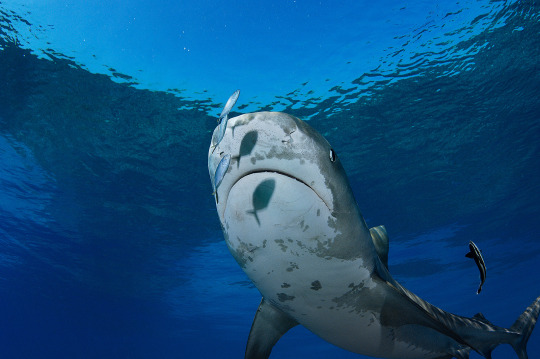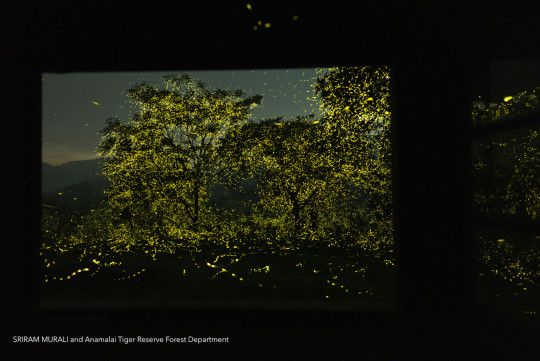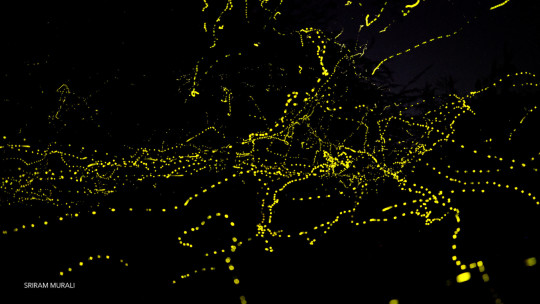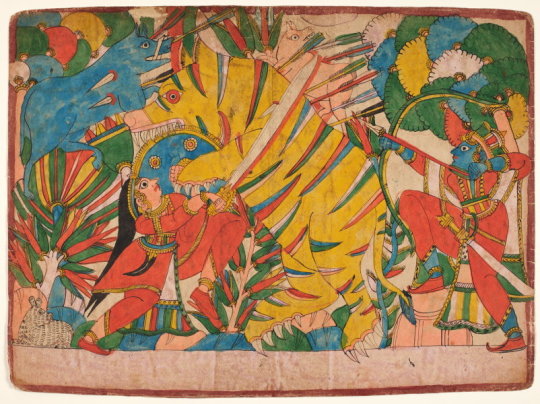#indian tiger
Text

Royal bengal Tiger on Mid-Noon Walk
Location: Tadoba Andhari Tiger Reserve
#indian wildlife#wild#nature#best indian wildlife photographer#indian wildlife safari#indian wildlife photographer#wildlife#wildlife photography#nature photography#TIger#indian tiger#tiger safari#indian safari
2 notes
·
View notes
Photo










(via Tierdecke mit "Symbol eines indischen Tigers, Kultur Indiens" von MIRO3D)
#findyourthing#redbubble#tiger#indian tiger#interior design#interiordesign#tshirt#tshirts#tshirtdesign#fashion#fashiondesign
1 note
·
View note
Text
Continental

I have no great opinion on the overly broad "Asia Tiger" coming to a more specific locally -- "Indian" -- Asia is a large landmass encompassing multitudinous countries climates and ecosystems -- except to point out the same is the case with Africa.

Curious that Asia wasn't adjectived, I guess.
#Archie Comics#Jughead#Zoo#Zookeeper#African gorilla#Indian tiger#Gluttony#Exactly what he expects to be thrown in his mouth I don't know#Stan Goldberg#1979
1 note
·
View note
Text
Endangered Indian sandalwood. British war to control the forests. Tallying every single tree in the kingdom. European companies claim the ecosystem. Spices and fragrances. Failure of the plantation. Until the twentieth century, the Empire couldn't figure out how to cultivate sandalwood because they didn't understand that the plant is actually a partial root parasite. French perfumes and the creation of "the Sandalwood City".
---
Selling at about $147,000 per metric ton, the aromatic heartwood of Indian sandalwood (S. album) is arguably [among] the most expensive wood in the world. Globally, 90 per cent of the world’s S. album comes from India [...]. And within India, around 70 per cent of S. album comes from the state of Karnataka [...] [and] the erstwhile Kingdom of Mysore. [...] [T]he species came to the brink of extinction. [...] [O]verexploitation led to the sandal tree's critical endangerment in 1974. [...]
---
Francis Buchanan’s 1807 A Journey from Madras through the Countries of Mysore, Canara and Malabar is one of the few European sources to offer insight into pre-colonial forest utilisation in the region. [...] Buchanan records [...] [the] tradition of only harvesting sandalwood once every dozen years may have been an effective local pre-colonial conservation measure. [...] Starting in 1786, Tipu Sultan [ruler of Mysore] stopped trading pepper, sandalwood and cardamom with the British. As a result, trade prospects for the company [East India Company] were looking so bleak that by November 1788, Lord Cornwallis suggested abandoning Tellicherry on the Malabar Coast and reducing Bombay’s status from a presidency to a factory. [...] One way to understand these wars is [...] [that] [t]hey were about economic conquest as much as any other kind of expansion, and sandalwood was one of Mysore’s most prized commodities. In 1799, at the Battle of Srirangapatna, Tipu Sultan was defeated. The kingdom of Mysore became a princely state within British India [...]. [T]he East India Company also immediately started paying the [new rulers] for the right to trade sandalwood.
British control over South Asia’s natural resources was reaching its peak and a sophisticated new imperial forest administration was being developed that sought to solidify state control of the sandalwood trade. In 1864, the extraction and disposal of sandalwood came under the jurisdiction of the Forest Department. [...] Colonial anxiety to maximise profits from sandalwood meant that a government agency was established specifically to oversee the sandalwood trade [...] and so began the government sandalwood depot or koti system. [...]
From the 1860s the [British] government briefly experimented with a survey tallying every sandal tree standing in Mysore [...].
Instead, an intricate system of classification was developed in an effort to maximise profits. By 1898, an 18-tiered sandalwood classification system was instituted, up from a 10-tier system a decade earlier; it seems this led to much confusion and was eventually reduced back to 12 tiers [...].
---
Meanwhile, private European companies also made significant inroads into Mysore territory at this time. By convincing the government to classify forests as ‘wastelands’, and arguing that Europeans would improves these tracts from their ‘semi-savage state’, starting in the 1860s vast areas were taken from local inhabitants and converted into private plantations for the ‘production of cardamom, pepper, coffee and sandalwood’.
---
Yet attempts to cultivate sandalwood on both forest department and privately owned plantations proved to be a dismal failure. There were [...] major problems facing sandalwood supply in the period before the twentieth century besides overexploitation and European monopoly. [...] Before the first quarter of the twentieth century European foresters simply could not figure out how to grow sandalwood trees effectively.
The main reason for this is that sandal is what is now known as a semi-parasite or root parasite; besides a main taproot that absorbs nutrients from the earth, the sandal tree grows parasitical roots (or haustoria) that derive sustenance from neighbouring brush and trees. [...] Dietrich Brandis, the man often regaled as the father of Indian forestry, reported being unaware of the [sole significant English-language scientific paper on sandalwood root parasitism] when he worked at Kew Gardens in London on South Asian ‘forest flora’ in 1872–73. Thus it was not until 1902 that the issue started to receive attention in the scientific community, when C.A. Barber, a government botanist in Madras [...] himself pointed out, 'no one seems to be at all sure whether the sandalwood is or is not a true parasite'.
Well into the early decades of twentieth century, silviculture of sandal proved a complete failure. The problem was the typical monoculture approach of tree farming in which all other species were removed and so the tree could not survive. [...]
The long wait time until maturity of the tree must also be considered. Only sandal heartwood and roots develop fragrance, and trees only begin developing fragrance in significant quantities after about thirty years. Not only did traders, who were typically just sailing through, not have the botanical know-how to replant the tree, but they almost certainly would not be there to see a return on their investments if they did. [...]
---
The main problem facing the sustainable harvest and continued survival of sandalwood in India [...] came from the advent of the sandalwood oil industry at the beginning of the twentieth century. During World War I, vast amounts of sandal were stockpiled in Mysore because perfumeries in France had stopped production and it had become illegal to export to German perfumeries. In 1915, a Government Sandalwood Oil Factory was built in Mysore. In 1917, it began distilling. [...] [S]andalwood production now ramped up immensely. It was at this time that Mysore came to be known as ‘the Sandalwood City’.
---
Text above by: Ezra Rashkow. "Perfumed the axe that laid it low: The endangerment of sandalwood in southern India." Indian Economic and Social History Review 51, no. 1, pages 41-70. March 2014. [Bold emphasis and some paragraph breaks/contractions added by me. Italicized first paragraph/heading in this post added by me. Presented here for commentary, teaching, criticism purposes.]
#a lot more in full article specifically about#postindependence indian nationstates industrial extraction continues trend established by british imperial forestry management#and ALSO good stuff looking at infamous local extinctions of other endemic species of sandalwood in south pacific#that compares and contrasts why sandalwood survived in india while going extinct in south pacific almost immediately after european conques#abolition#ecology#imperial#colonial#landscape#indigenous#multispecies#tiger#tidalectics#archipelagic thinking#intimacies of four continents#carceral geography#geographic imaginaries#haunted
220 notes
·
View notes
Note
So, I've got a question for the snake den. There are so many versions of eclipse (and some of sun and moon of course), that they cant all be called Eclipse, right? So I think that each of them should each have their own seperate names
In-universe, the nagas have their own language, and to Y/N, their names in their native tongue sound so terribly similar that it's difficult for them to differentiate the nagas but for the sake of the question, and maybe bordering a little into OC territory, these are the names I would give them so not everyone is named Eclipse.
Blackwater Lure Eclipse = Tiago
Cryptid Sightings Eclipse = Tlhoolcha
Sleuth Jesters Eclipse = Vinicius
Bounty Hunter Eclipse = Nahuel
Devil Eclipse Eclipse = Jacare
Sleuth Jesters Sun = Helio
Sleuth Jesters Moon = Meztli
Syzygy in Dedication Eclipse = Saulo
Syzygy in Dedication Sun = Inacio
Syzygy in Dedication Moon = Luan
#the serpet den#in the serpent den the setting is south American so their names are inspired/reflect that#whereas Trust In Me is indian/asia based snakes for the boys + tiger eclipse#ferret-who-likes-robots
76 notes
·
View notes
Text

Unknown, 18th century, India
185 notes
·
View notes
Text
"it's just fiction" except for when you critique them cause then it's bullying and silencing the other side
#romance club#bffr#VINCENT is morally gray#ELLIOT is morally gray#ALEXANDRE is as well#but not a fucking coloniser and a sadist?#im more than happy to talk about it if you really want but this whole discourse is childish#just accept the truth and move on 👍🏻 theres no shame in romancing evil lis#there is shame though in pretending that a person who gifts his indian bride a chained tiger is innocent and whipped
27 notes
·
View notes
Text


I am on my way - From Tadoba Andhari Tiger Reserve forest during March Workshop
A small tip - While capturing the tiger head on, instead random clicks, wait for the perfect posture and light. Here I waited for the light falling on his face. People who are not using super fast card, they may miss the perfect moment because of 'Buffer' if continues clicking random moments without noticing.
To join my upcoming workshops, visit my website
www.jayantaguhaphotography.com
#tadobanationalpark#safariwithjayanta#jayantaguhaphotography#tiger#createwithsony#bigcatsforever#bigcatswildlife#wildlife#wildplanet#nature#naturephotographer#bbcearth#natgeo#natgeohr#natgeoindia#natgeowild#animalsofinstagram#animalelite#wildlifephotographytours#camostoryexpedition#safari#indianwildlife#incredibleindia#maharashtratourism#sonyindiaofficial#earthcapture#sonyindia
#wild#nature#indian wildlife#wildlife photography#indian wildlife photographer#indian wildlife safari#best indian wildlife photographer#wildlife#nature photography#tiger#indian jungle#indian tiger#natgeo
1 note
·
View note
Text



Taming the Tiger Shark
The tiger shark (Galeocerdo cuvier) is a common sight for divers, fishermen, and tourists in the tropical waters of the Atlantic and Pacific oceans. They are often found around sea grass fields or coral reefs, and tend to prefer warm, shallower waters near the coastline or surrounding atolls and islands. The northern end of their range extends up to the northern borders of the United States and China, while their southern range reaches down to Brazil, Madagascar, and the eastern coast of Australia.
While they're slightly smaller than great whites, G. cuvier is still one of the largest carnivores in the ocean. Adults can grow up to 4.7 m (15 ft 5 in) long and weigh between 300 and 900 kg (700 and 2,000 lb). Females tend to be larger than males, but the two sexes are otherwise indistinguishable. Individuals are typically bluish gray or green, with a white or light yellow underbelly; this provides them with camouflage, as fish swimming overhead or below are unable to pick out the shark's silhouette against the dark or light background, respectively.
As an apex predator, G. cuvier has few predators of its own. Juvenile tiger sharks will often fall prey to other sharks, including adults of their own species. Orcas are also occasionally known to prey on tiger sharks, but these occurrences are rare. In their own food chain, G. cuvier has a large appetite and will eat almost anything. Coral reef fish are a common target, though their speed and small size makes them harder to catch. More often tiger sharks will prey on cephalopods, crustaceans, sea snakes, turtles, sea birds, and a host of marine mammals like dolphins, dugongs, sea lions, and young, injured, or dead whales. Inadvertently, tiger sharks will also consume garbage such as bottles tires, earning them the nickname 'The Garbage Can of the Ocean'.
Tiger sharks are primarily active at night. Contrary to other sharks, G. cuvier has excellent eyesight, as well as a keen sense of smell. In addition, tiger sharks have two special sensory organs. The lateral line extends down the length of the body and can detect minute vibrations in the water. Ampullae of Lorenzini are small electroreceptors located on the snout; these detect the weak electrical impulses generated by prey. All these features make it easy for tiger sharks to find a meal, and once located their body shape allows them to put on a burst of speed and make quick turns to catch their target. Most of the time, this hunting practice is done alone, but occasionally groups of tiger sharks will gather to scavenge a large carcass or for the mating season.
Male tiger sharks mate every year, while females only reproduce every three years. Breeding seasons differ based on location; in the Northern Hemisphere mating occurs between March and May, while in the Southern Hemisphere it's between November and January. During this time, dozens or even hundreds of sharks may gather to find mates. Females carry their young for up to 16 months, at which time they give live birth. Tiger sharks are ovoviviparous, meaning that eggs are fertilised and hatch inside the mother; this species is also unique in that they employ a technique called embryotrophy, in which young gestate in sacks which are filled with an embryonic fluid. A single litter of tiger sharks may contain between 10 to 80 pups, and each one may live up to 12 years in the wild.
Conservation status: The IUCN has classified the tiger shark as Near Threatened. While exact numbers are unclear, a great many tiger sharks are killed each year for their skin, fins, and liver. This species also has a reputation for vicious attacks, and while they can be aggressive when threatened, only a handful of shark attacks occur each year.
If you like what I do, consider leaving a tip or buying me a ko-fi!
Photos
Neil Hammerschlag
Brian Skerry
David Snyder
#tiger shark#Carcharhiniformes#Galeocerdonidae#ground sharks#sharks#cartilaginous fish#fish#marine fauna#marine fish#coral reefs#coral reef fish#coasts#coastal fish#atlantic ocean#Pacific Ocean#indian ocean#indo pacific#animal facts#biology#zoology
96 notes
·
View notes
Photo










(via Magnet mit "Symbol eines indischen Tigers, Kultur Indiens" von MIRO3D)
#findyourthing#redbubble#tiger#indiantiger#indian tiger#interior design#interiordesign#tshirt#tshirts#tshirtdesign#fashion#fashiondesign
1 note
·
View note
Text

'Tiger Woman'
(Kalighat painting). By Kalam Patua
#tiger#art#tiger woman#aesthetic#vintage#old school cool#style#beauty#indian art#kalam patua#vintage art
28 notes
·
View notes
Text

Bengal tiger (Panthera tigris tigris)
Photo by Andy Rouse
#bengal tiger#tiger#panthera#panthera tigris#panthera tigris tigris#felidae#charismatic megafauna#big cats#indian wildlife#animals#wildlife#nature#orange#orange animals
92 notes
·
View notes
Photo



Billions of Fireflies Light Up an Indian Wildlife Reserve in Rare Footage Captured by Sriram Murali.
vimeo
#insect#insects#firefly#fireflies#animal#animals#light#lightning bug#lightning bugs#indian wildlife reserve#sriram murali#thisiscolossal#article#articles#anamalai tiger reserve#tamil nadu#india#phenomena#rare#forest#forests#nature#night#night-time#dark#video#videos
42 notes
·
View notes
Text


Unknown, Two sided painting, India
Recto: Meeting nobility, verso: Hunting a tiger
late 19th century
198 notes
·
View notes
